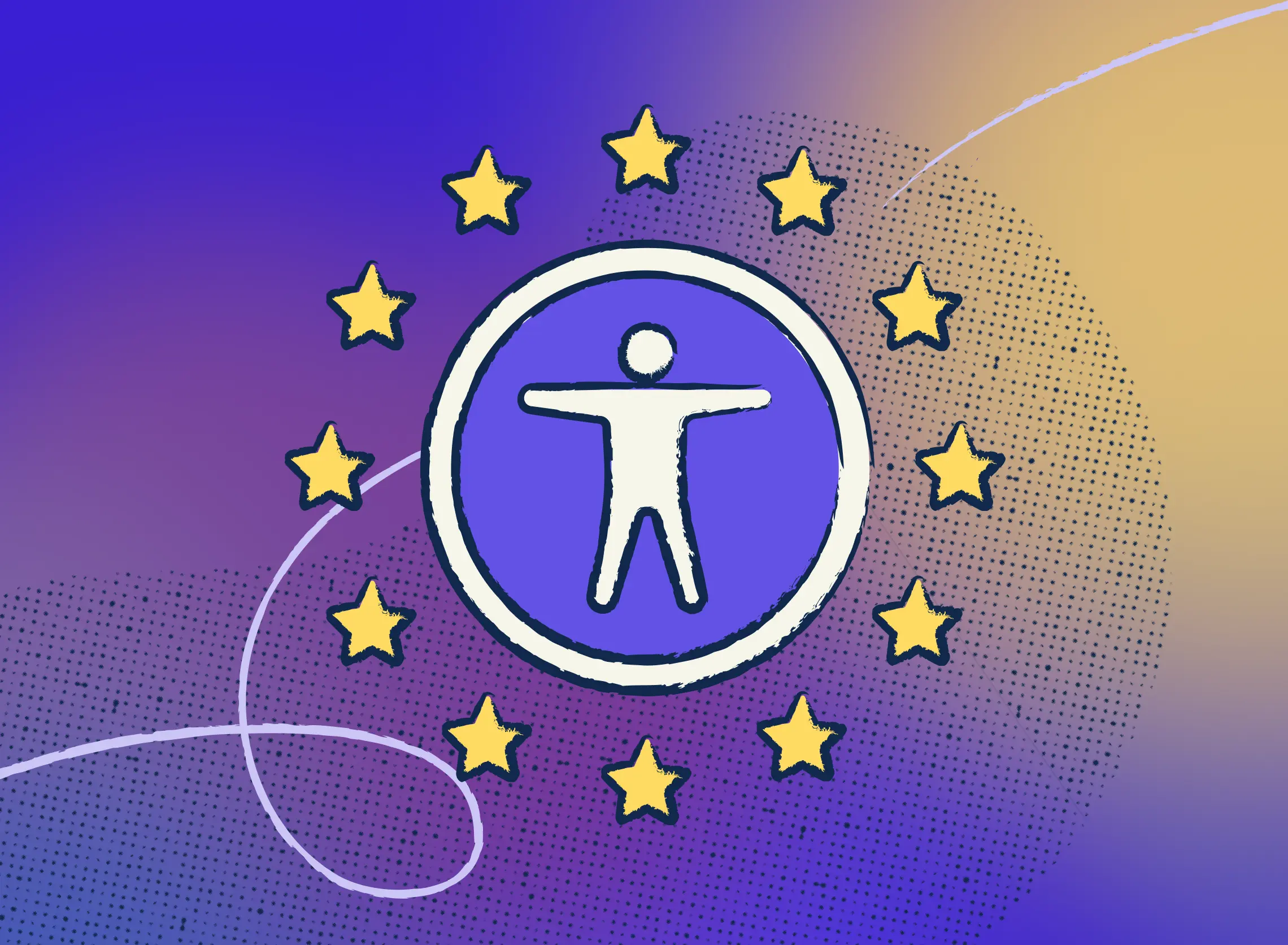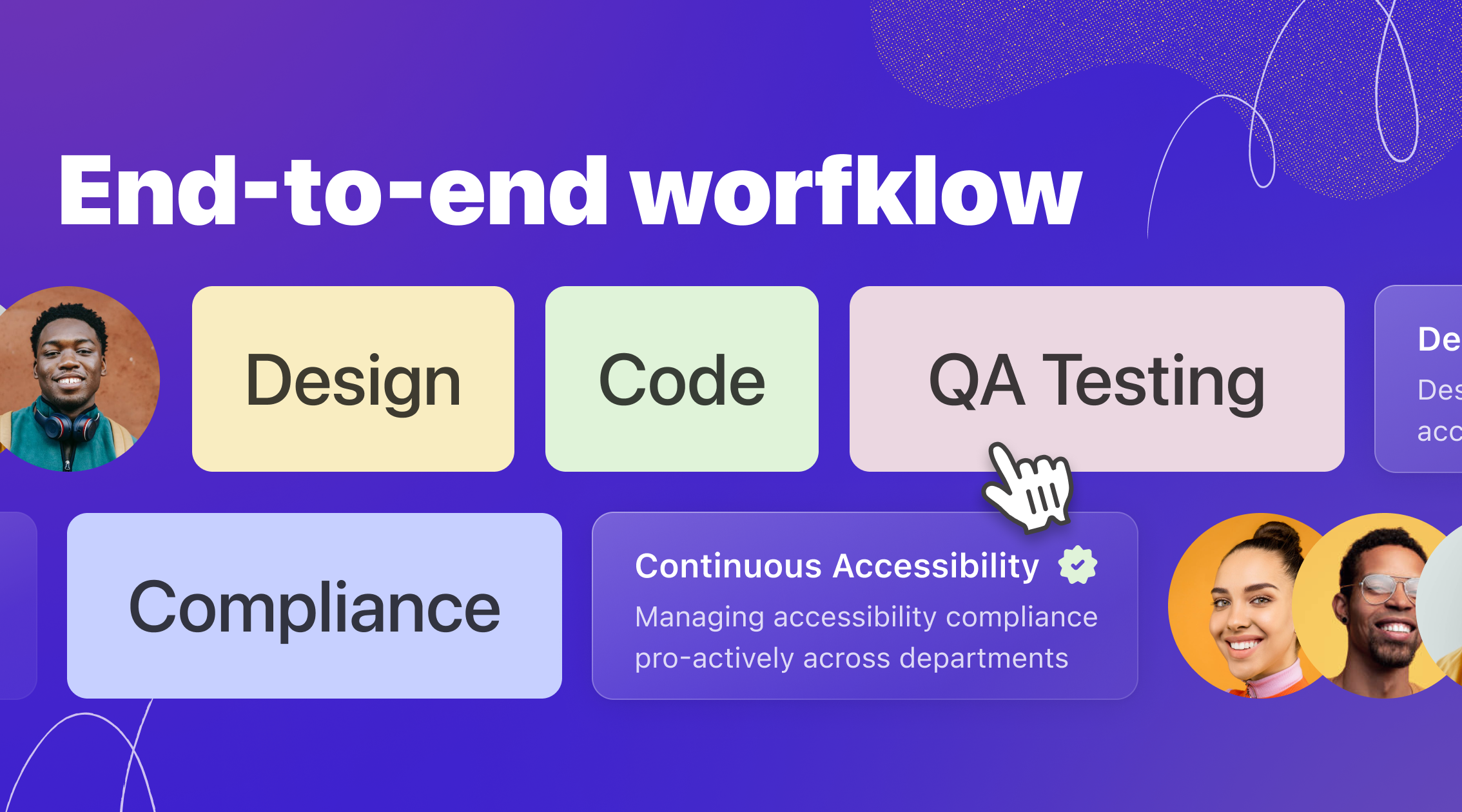Navigating compliance with the European Accessibility Act (EAA)
What is the European Accessibility Act? Who does it apply to and when is the deadline for compliance? How can your company ensure compliance with the EAA? In this article we answer these and many additional questions as well as outline how Stark empowers your organization to set up a continuous, scalable, and proactive digital accessibility workflow.

Team Stark
Jul 09, 2024

The European Accessibility Act (EAA) will go into effect on June 28, 2025. This critical legislation sets standardized accessibility requirements across the EU. It aims to eliminate barriers for people with disabilities, ensuring equal access to various products and services, including digital platforms. The EAA applies to both public and private sector companies, covering websites, mobile applications, and other ICT products — which means organizations of all kinds, from startups to government, are held to the same compliance requirements.
Given the one-year countdown to the EAA enforcement has officially started, let’s take a look at the key components and how you and your company can ensure compliance with it.
Why is the EAA Important?
-
Promoting inclusivity: The EAA ensures digital environments are accessible to everyone, fostering an inclusive world where everyone can be a contributor to the economy and society.
-
Expanding market reach: Accessible products can reach a broader audience, including the 80 million people in the EU with disabilities – and more than 1B people worldwide.
-
Legal obligation: Compliance with the EAA is mandatory. Non-compliance can result in legal actions and penalties for both smaller companies and large corporations.
Who Does It Apply To?
The EAA impacts a wide range of stakeholders. It applies to both public and private companies involved in the production, distribution, and supply of products and services such as computer and operating services, e-readers, websites, and more. And it spans various industries, including communication, e-commerce, finance, education, and transportation.
Key Components of the EAA
The EAA outlines specific accessibility requirements for various sectors:
-
ICT products and services: Websites, software, mobile apps, and digital content must be accessible.
-
Banking services: ATMs and online banking platforms must be designed for accessibility.
-
E-commerce: Online shopping sites must ensure accessibility for all users.
-
Transport services: Information systems for air, bus, rail, and water transport need to meet accessibility standards.
-
Audio-visual services: Digital TV services and electronic program guides must be accessible.
Providers of products and services covered by the EAA must achieve compliance by June 2025. Beyond a “one-time check”, the legislation also establishes a monitoring and complaint process, with penalties, including fines, for non-compliance, depending on the member states.
How to handle EU-wide vs. country-specific legislation
Under Article 15(1) of the EAA, products and services which conform with harmonized standards published in the Official Journal of the European Union are presumed to conform with the accessibility requirements of the EAA, where the standards or parts of the standards cover those requirements.
The European Commission has formally requested the drafting of standards in support of the EAA. This request provides for the following existing standards to be revised:
- EN 301 549 Accessibility requirements for ICT products and services
- EN 17161:2019 Design for All - Accessibility following a Design for All approach in products, goods and services - Extending the range of users
- EN 17210 Accessibility and usability of the built environment - Functional requirements
The carveout 15(1) means that compliance with the technical standards defined by the EU will take precedence over national legislation — which is why thinking about compliance with technical standards is your best liability shield.
We recommend you focus on EN 301 549 over any country specific requirements. However, you should revisit with your legal counterparts any legal requirements or agreements per nation for your company.
In terms of timing and scope, we urge all our customers to implement a full end-to-end continuous accessibility process as soon as possible since the EAA first and foremost requires a company to have a process for reporting, monitoring and remediation in place.
So, in the case of any audit, you want to be able to showcase a company-wide system to proactively manage accessibility compliance (comparable to privacy and security compliance). Since there’s no such thing as entirely “accessibility defect free code/product”, the goal must be to detect and remediate defects continuously and as quickly as possible at scale. This is strengthened by 15(1) which makes reference to not just EN 301 549 (which is effectively WCAG 2.1.) but also EN 17161:2019 — which is focused on embedding accessibility as early as design processes, and not waiting until development.

Ensuring EAA compliance with Stark
Navigating the EAA can be complex, especially because EU member states are each responsible for the implementation. But having the right tools and solutions can make all the difference. Compliance with the EAA gets a lot easier when your organization embraces these four key pillars for a modern accessibility posture.
-
Establishing Continuous Accessibility: Use the Stark platform to set up a proactive workflow that empowers your organization to continuously monitor and, in turn, rectify accessibility in real-time as a non-negotiable quality requirement across the entire development lifecycle.
-
Conduct accessibility audits: Evaluate your current digital products and services to identify areas that are out of compliance and need improvement.
-
Integrated tooling: Using Stark’s integrated tooling from design and code to the live product ensures accessibility issues can be found as early as the first design drafts, reducing cost and accelerating time to compliance.
-
Educate your team: Provide training to ensure your team is up-to-date with accessibility standards, proactive workflows, and best practices.
Stark provides designers, developers, and other stakeholders with software to proactively detect and fix accessibility issues as early as the first designs and throughout the entire development process.
Our tools not only help identify these issues but also offer automated and assisted remediation solutions, plus a dashboard to track progress and regressions across projects in real-time.
- For designers, this means you can use the Stark tools right inside Figma to automatically detect and fix accessibility issues, and then annotate design files for seamless dev handover.
- Developers can integrate Stark’s accessibility test engine directly into your existing CI/CD automation as well as use Stark’s real-time audits for your code repositories.
- PMs and managers can use Stark’s project dashboard to proactively manage accessibility compliance from design and code to the live product with real-time reports and intelligent insights for efficiency gains.
By integrating Stark into your team’s workflow, you can ensure your products adhere to WCAG standards, setting the foundation for EAA compliance, and making your digital content, software, and services accessible to all.
What’s more, with Stark’s real-time monitoring platform your organization can produce the necessary transparency for compliance reporting across all parts of the development lifecycle.
And with Stark’s Compliance Center your company can record evidence of how accessibility has been integrated across all departments, from product, marketing and IT to HR and procurement.
Start a free trial and get started
To get started managing WCAG and Section 508 compliance, start a free Business trial and experience Stark’s proactive accessibility workflow that matches the speed of your development process – integrated right into the tools your team already loves to use.
And if you have any questions or feedback, don’t hesitate to reach out to us at support@getstark.co, or join the conversations in our Stark Slack Community, on LinkedIn, or on Twitter.